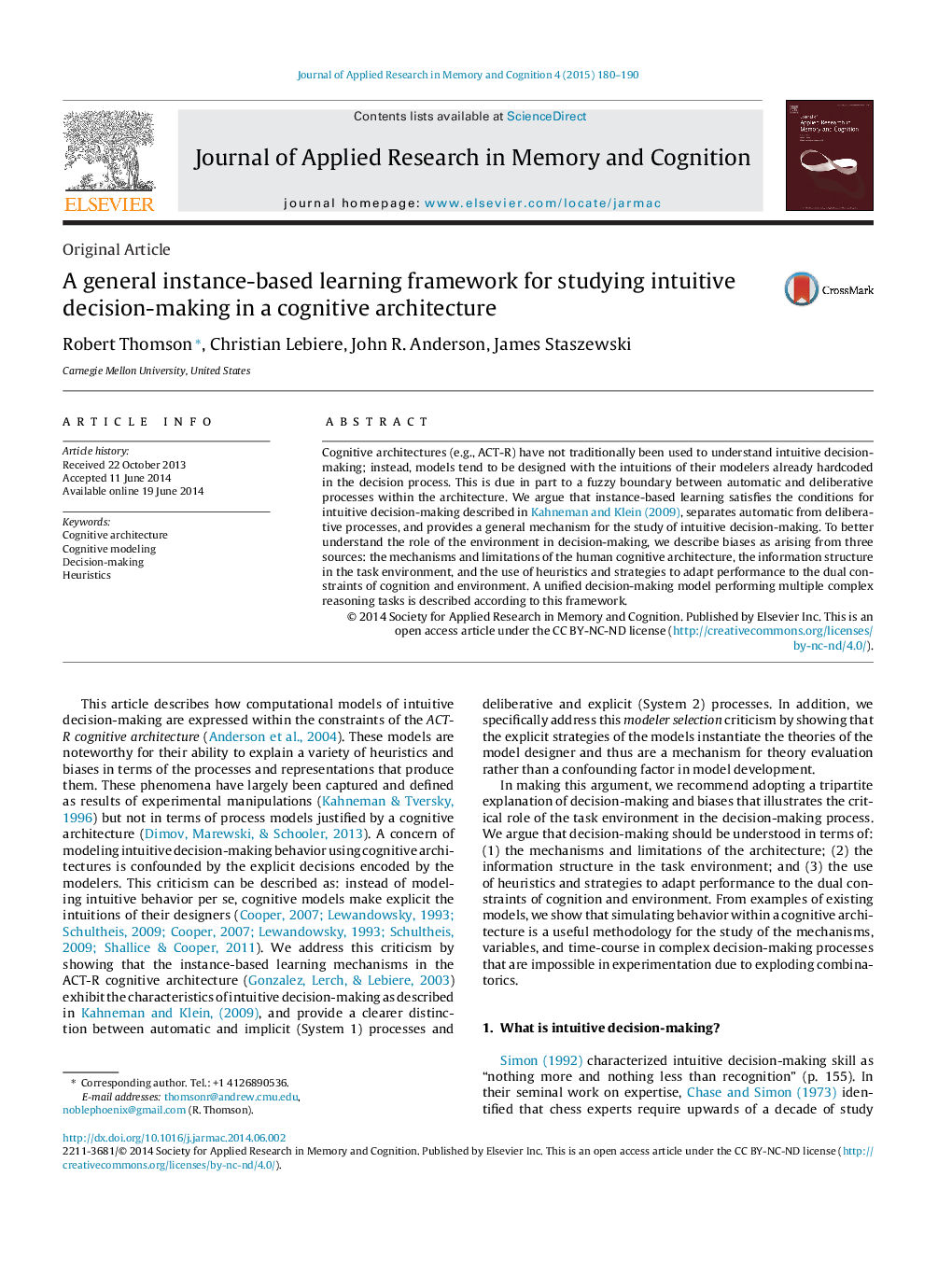| Article ID | Journal | Published Year | Pages | File Type |
|---|---|---|---|---|
| 881612 | Journal of Applied Research in Memory and Cognition | 2015 | 11 Pages |
•We argue for using cognitive architectures to study intuitive decision-making.•Instance-based learning satisfies conditions for intuitive decision-making.•Biases arise due to cognitive mechanism, the task environment, and heuristics.•Decision-making is best studied using a unified model of multiple complex tasks.
Cognitive architectures (e.g., ACT-R) have not traditionally been used to understand intuitive decision-making; instead, models tend to be designed with the intuitions of their modelers already hardcoded in the decision process. This is due in part to a fuzzy boundary between automatic and deliberative processes within the architecture. We argue that instance-based learning satisfies the conditions for intuitive decision-making described in Kahneman and Klein (2009), separates automatic from deliberative processes, and provides a general mechanism for the study of intuitive decision-making. To better understand the role of the environment in decision-making, we describe biases as arising from three sources: the mechanisms and limitations of the human cognitive architecture, the information structure in the task environment, and the use of heuristics and strategies to adapt performance to the dual constraints of cognition and environment. A unified decision-making model performing multiple complex reasoning tasks is described according to this framework.
